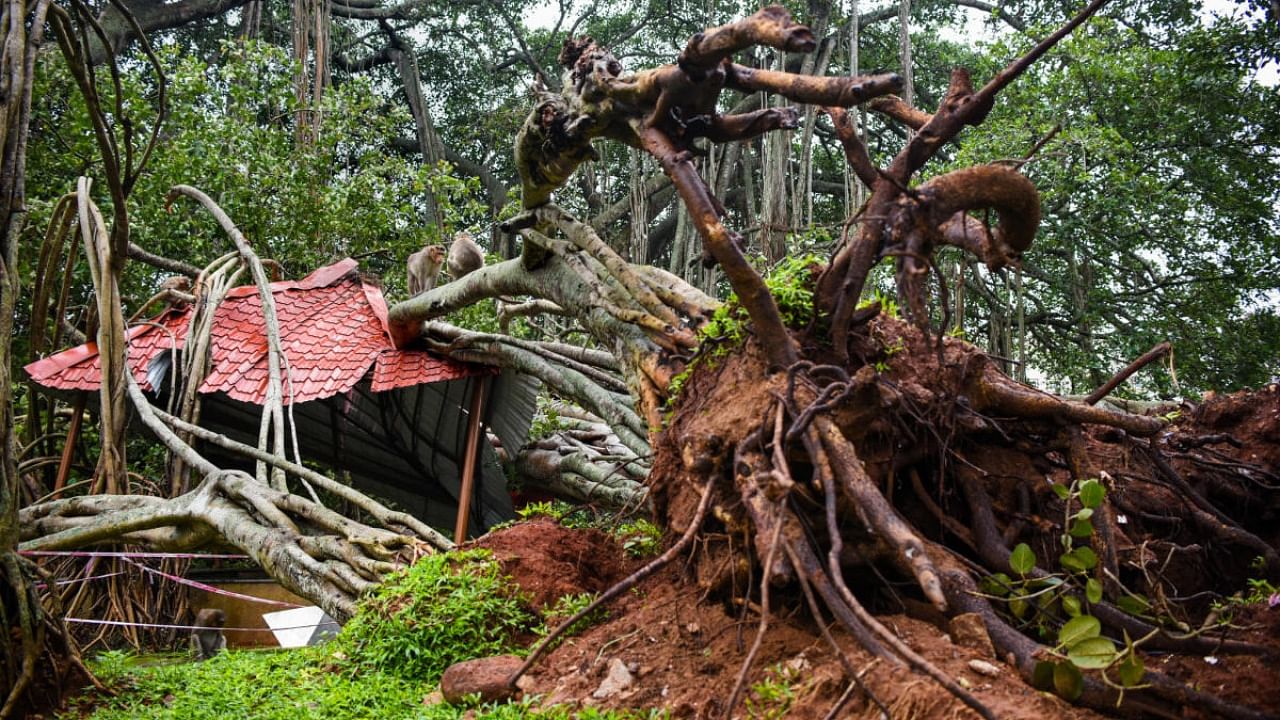
Visiting the 400-year-old heritage banyan tree in Ketohalli off Mysuru Road, the conservation committee has recommended in situ conservation of damaged parts to creating a wind corridor to cut resistance.
The inspection was prompted by the uprooting of the tree’s secondary trunk on Sunday and damage to other parts during the heavy rains and squalls lashing the city for the past one week.
The committee dismissed views that the tree was uprooted due to the removal of soil and clarified that two-inch top soil was removed and was replaced with red soil mixed with organic manure.
This was done to improve aeration and stop water stagnation.
Committee chairman and former environment secretary A N Yellappa Reddy said the heavy rain and fierce winds were part of the ongoing effects of climate change. “The damage is caused by natural forces. But there is no doubt that climate change has a role to play in extreme weather events. We have recommended several short-term measures and the creation of a wind corridor as a long-term measure,” he said.
The corridor is formed by a trimming canopy to provide an opening for the fierce winds and reduce the resistance.
Horticulture Department Joint Secretary M Jagadeesh said the department will soon begin a study on wind patterns before focusing on the wind corridor.
“Our priority is to implement the short-term recommendations within the next 10 days, following which we will start the study,” he said.
Short-term measures
The department said the primary trunk of the tree died about 60 years ago.
The heritage tree has survived and spread over nearly 3 acres thanks to its 1,359 aerial prop roots, which have grown into (secondary) trunks.
Of these, 548 roots are yet to touch the ground.
An action plan has been prepared based on suggestions by Reddy and members of the committee: former director of Botanical Survey of India M Sanjappa and retired GKVK professor Balakrishnegowda, who is in charge of India’s biggest Banyan Tree in Kolkata.
Accordingly, in situ conservation will be taken up at the vacant space created by uprooting the trunk.
The fallen trunk will be cut into stems of 8-10 feet in height, treated with Mycorrhizal fungi powder, and planted.
Two other aerial prop roots weakened by the gales will be given support by forming a mound at their base, which will be supported by boulders.